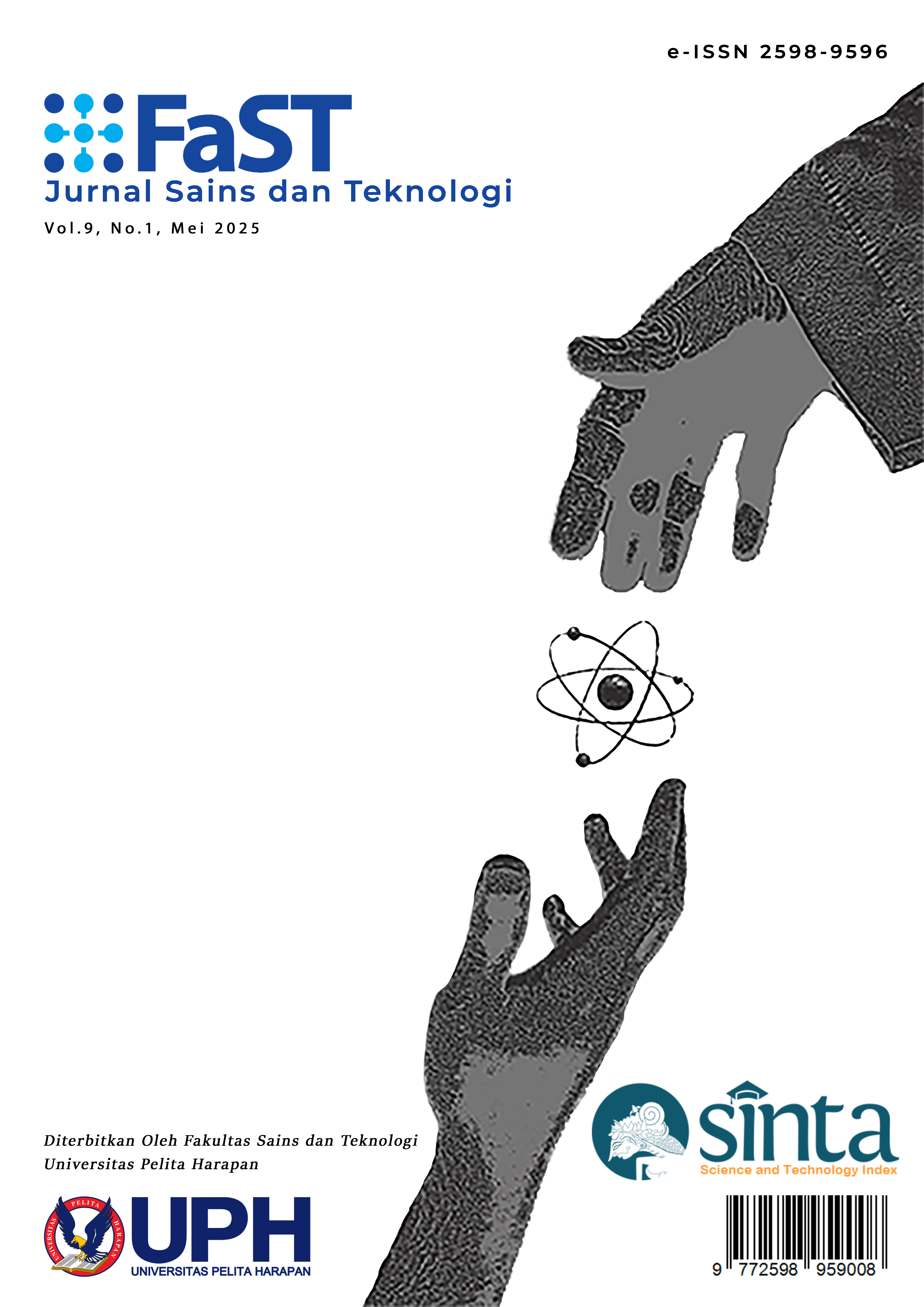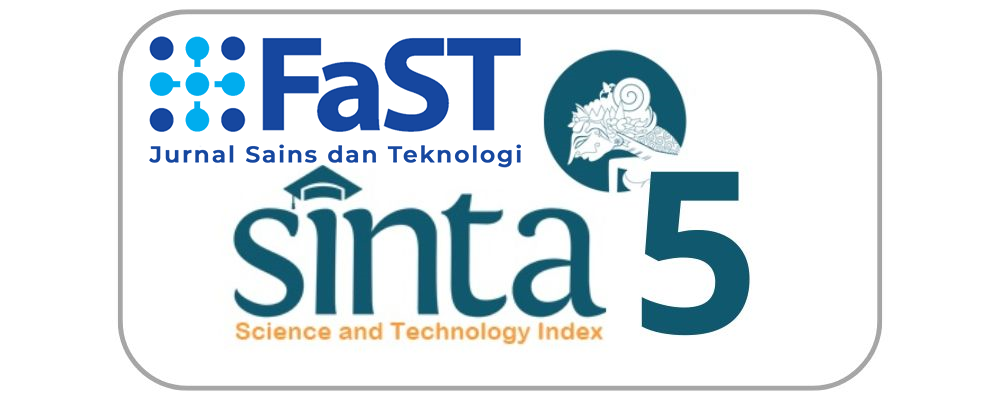Pengembangan dan Perancangan Alat Potong Sayur dengan Menggunakan Metode Quality Function Deployment (QFD)
[Vegetable Cutting Tools Development and Design Using Quality Function Deployment (QFD) Method]
DOI:
https://doi.org/10.19166/jstfast.v9i1.9564Keywords:
technology, design and development, HOQ, QFDAbstract
Technology can help household chores. One household task involves manual cutting of vegetables. The concept of vegetable cutting tool’s design and development is driven by the need to reduce injuries and increase productivity for users. The research’s objective is to design and develop a vegetable cutting tool using the Quality Function Deployment (QFD) method. The limitations of the problems in QFD are the creation of the House of Quality , parts deployment, and product development and design is on phases 0, 1, 2, and 3. Phase 0 generates a mission statement for the vegetable cutting tool. Phase 1 creates assessments for the HoQ. Phase 2 produces design representations. Phase 3 designs the prototype. First step of HoQ is gathering feedback on customer needs based on feature, performance, and ergonomic aspects. The Voice of Customer results in six variable WHATs and seven HOWs. The HoQ shows three main priorities for product design and development: short user steps, blade sharpness, and automation of the tool. Parts deployment identifies critical components in the design of the tool, including the main frame, tool automation, and blade. Subsequently, the vegetables cutting tool’s prototype is designed. Prototype shows difference in ergonomic and shorter user step.
Bahasa Indonesia Abstract: Teknologi dapat membantu manusia menyelesaikan pekerjaan rumah tangga. Salah satu pekerjaan rumah tangga yaitu pemotongan sayur yang manual. Gagasan pengembangan dan perancangan alat potong sayur dilandasi oleh kebutuhan pengurangan cedera serta meningkatkan produktivitas kerja bagi penggunanya. Tujuan dari penelitian ini yaitu untuk merancang dan mengembangkan produk alat potong sayur menggunakan metode Quality Function Deployment (QFD). Pembatasan masalah penelitian pada QFD dilakukan penyusunan House of Quality, parts deployment, serta pada pengembangan dan perancangan produk berfokus pada fase 0, 1, 2, dan 3. Fase 0 menghasilkan mission statement alat potong sayur. Fase 1 menghasilkan penilaian penyusunan HoQ. Fase 2 menghasilkan penggambaran desain. Fase 3 berfokus perancangan prototype. Penyusunan awal HoQ adalah mendapatkan suara kebutuhan pelanggan yang didasarkan aspek fitur, performansi dan ergonomi. Pengumpulan VoC menghasilkan enam variabel WHATs dan tujuh HOWs. Hasil HoQ mendapatkan tiga prioritas utama dalam pengembangan dan perancangan produk yaitu langkah penggunaan singkat, ketajaman pisau, dan otomatisasi alat potong sayur. Parts deployment mengidentifikasi komponen kritis dalam perancangan alat potong sayur yaitu kerangka utama, otomatisasi alat, dan pisau pemotong. Lalu, dilanjutkan perancangan prototype alat potong sayur. Prototype memberikan pengembangan yang terlihat pada aspek ergonomi dan langkah penggunaan alat singkat.
References
Awwaluddin, M., Hardjanto, T., Jalil, A. (2016). Analisis Kekuatan Struktur dan Nilai Ergonomi Sistem Mekanik Perangkat Diagnosis Fungsi Ginjal dan Thyroid Terpadu. Jurnal Perangkat Nuklir, 10(2), 62-72.
Chuan, T. K., Hartono, M., & Kumar, N. (2010). Anthropometry of the Singaporean and Indonesian populations. International Journal of Industrial Ergonomics, 40(6), 757-766. https://doi.org/10.1016/j.ergon.2010.05.001.
Hignett, S., & McAtamney, L. (2000). Rapid Entire Body Assessment (REBA). Applied Ergonomics, 31(2), 201-205.
Iridiastadi, H., MSIE, P. D., & Yassierli, P. D. (2014). Ergonomi suatu pengantar.
Bandung: PT. Remaja Rosdakarya.
MacLeod, D. (2006). The ergonomics kit for General Industry. Taylor & Francis. CRC Press. https://doi.org/10.1201/9781420006308.
McAtamney, L., & Corlett, N. (2004). Rapid Upper Limb Assessment (RULA). In Handbook of human factors and ergonomics methods (pp. 86-96). CRC Press. https://doi.org/10.1201/9780203489925.
Motaqi, M., & Ghanjal, A. (2019). Musculoskeletal Disorders (Definition, Causes, Risk Factors, and Prevention): Part I. International journal of musculoskeletal pain prevention, 4(1), 127-131. http://dx.doi.org/10.52547/ijmpp.4.1.127.
Riyan, M., Sukapto, P., & Yogasara, T. (2023). Perbaikan Sistem Kerja untuk Meningkatkan Keselamatan dan Kesehatan Kerja (K3) Serta Produktivitas Melalui Pendekatan Ergonomi Partisipatif (Studi Kasus Di PT. Eka Karya Sinergi Bandung). Jurnal Rekayasa Sistem Industri, 12(2), 237-250. 142. https://doi.org/10.26593/jrsi.v12i2.6784.237-250.
Sari, D. D. (2018). Analisa Postur Kerja Dengan Metode Rapid Entire Body Assessment (REBA) Pada Perkantoran SKK Migas. Universitas Mercu Buana. Jakarta. Fakultas Teknik.
Satudata Kemnaker. (2024). Kecelakaan Kerja Tahun 2023. Satudata Kemnaker. Retrieved from https://satudata.kemnaker.go.id/ data/kumpulan-data/1728
Setiawan, D., Hunusalela, Z.F., Nurhidayanti, R. (2021). Usulan Perbaikan Sistem Kerja Di Area Gudang Menggunakan Metode Rula Dan Owas Di Proyek Pembangunan Jalan Tol Cisumdawu Phase2 PT Wijaya Karya (Persero) Tbk. Jurnal Ilmiah Teknik dan Manajemen Industri Universitas Kadiri. 4(2): 78-90.
https://doi.org/10.30737/jatiunik.v4i2.999
Singh, L P. (2010). Work Posture Assessment in Forcing Industry: An Exploration Study in India. International Journal of Advanced Engineering Technology 1(3), pp 358-366.
Tiogana, V., & Hartono, N. (2020). Analisis postur kerja dengan menggunakan REBA dan RULA di PT X. Journal of Integrated System, 3(1), 9-25. https://doi.org/10.28932/jis.v3i1.2463.
Wignjosoebroto, S. (2003). Ergonomi studi gerak dan waktu. Surabaya: Guna Widya, 283.
Wilujeng, Agnes Ratri. (2018). Analisis Postur Kerja untuk Perbaikan Stasiun Kerja Pengemasan Sari Alang-Alang Menggunakan Metode REBA (Rapid Entire Body Assessment) dan OWAS (Ovaku Working Posture Analysis System) (Studi Kasus di UKM R Rovit, Kota Batu). Universitas Brawijaya. Malang. Fakultas Teknologi Pertanian.
Downloads
Published
Issue
Section
License
Copyright (c) 2025 Fanny Limiyana, sylvia sylvia

This work is licensed under a Creative Commons Attribution-ShareAlike 4.0 International License.
“Authors who publish with this journal agree to the following terms:
1) Authors retain copyright and grant the journal right of first publication with the work simultaneously licensed under a Creative Commons Attribution License (CC-BY-SA 4.0) that allows others to share the work with an acknowledgement of the work's authorship and initial publication in this journal.
2) Authors are able to enter into separate, additional contractual arrangements for the non-exclusive distribution of the journal's published version of the work (e.g., post it to an institutional repository or publish it in a book), with an acknowledgement of its initial publication in this journal.
3) Authors are permitted and encouraged to post their work online (e.g., in institutional repositories or on their website). The final published PDF should be used and bibliographic details that credit the publication in this journal should be included.”



